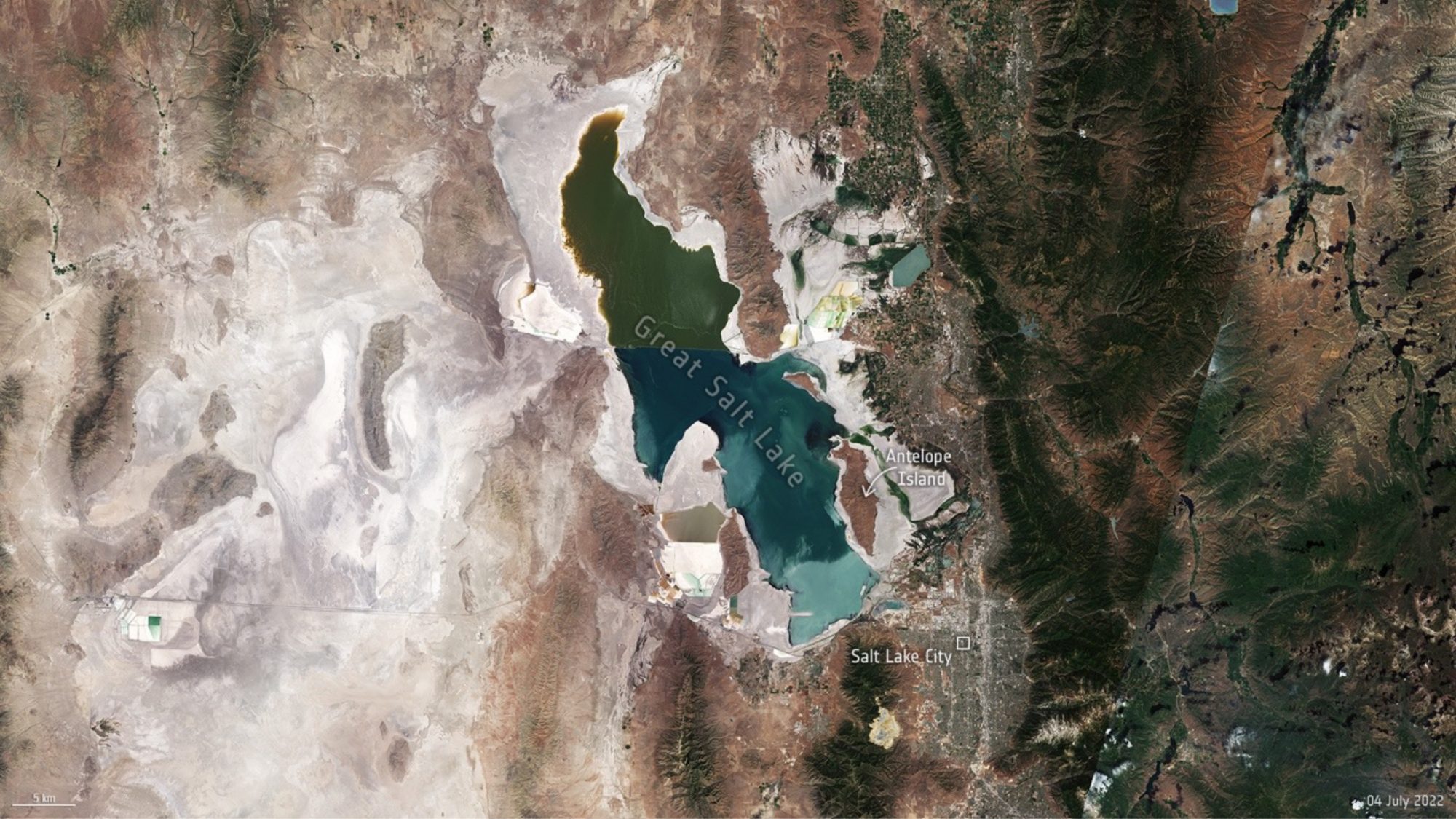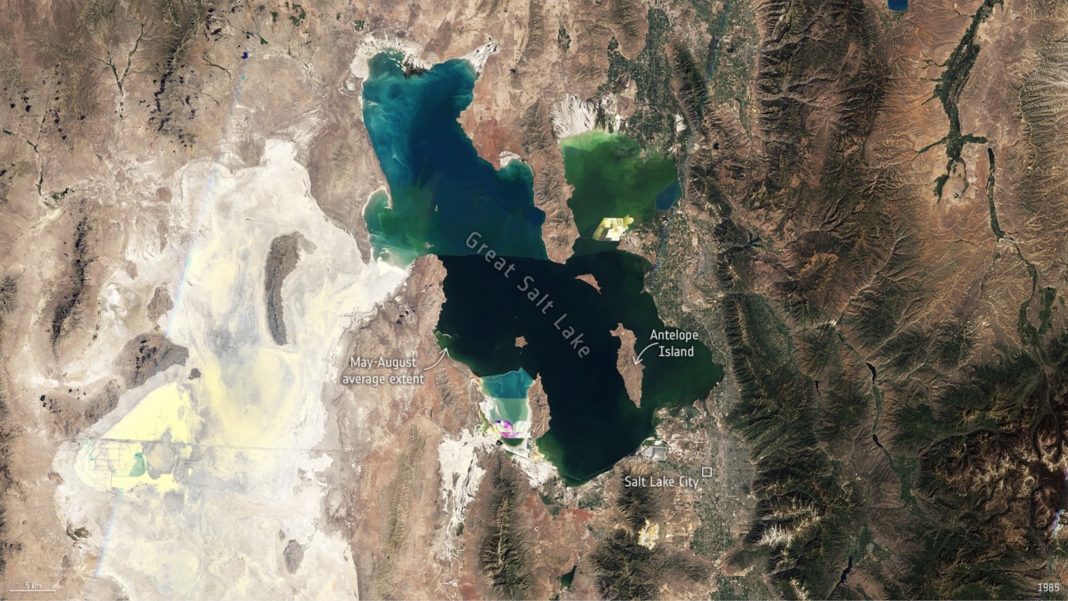Nancy Butler Songer, Associate Provost of STEM Education at the University of Utah, discusses the importance of supporting and including young people as part of environmental decision-making teams and key problem-solvers of our futures
The New York Times calls the environmental threat of the Great Salt Lake in the United States an “Environmental Nuclear Bomb.”
Even as water levels continue to decline (e.g., the 2022 average lake level was the lowest on record; Great Salt Lake Strike Team, 2023), regional population and water consumption continue to grow. The result is not only a dying off of the lake’s brine shrimp that support a stable ecosystem but the development of poisonous dust plumes that threaten human health.
In response, a group of scientists and economists with expertise in public policy, hydrology, water management, climatology, and dust have organized themselves as the Great Salt Lake Strike Team.
This team provides data-informed guidance and eleven scenarios for problem-solving, including strategies focused on conservation, new water, and engineering solutions. While at the present time, this team does not have any youth or educational partners on the Great Salt Lake Strike Team, our next project implements a plan to add secondary students as formal members of the Great Salt Lake Strike Team.
In 2020, UNESCO recognized the importance of empowering and involving youth in local problem-solving with the establishment of a document, Education for Sustainable Development: A Roadmap (ESD).
As stated in the Executive Summary, “This roadmap sets out the urgent challenges facing the planet and explores the next step UNESCO is taking in responding to them through education with detail on new emphases and actions.”
Similar to the Great Salt Lake Strike Team, this document emphasizes the collective agency of policymakers, community members, scientists, engineers, and educational institutions toward local action. In particular, UNESCO ESD priority area 4, Empowering and Mobilizing Youth emphasizes that “Decision-makers and members of public and private institutions must recognize young people as key contributors and actors in all efforts to promote sustainable development.
In particular, young people must be fully included in the design, delivery, and monitoring of policies and programs on education and sustainable development. Secured seats for youth representatives in the decision-making bodies of institutions at all levels is one of the ways to achieve this.”

UNESCO resources provide useful guides for how youth can get involved.
The Project Planner guides individuals through the selection of a local project and the necessary steps to design and implement a local solution. These steps include Project Identification, Budgeting, Fundraising, Implementation and Coordination, Communication and Visibility, and Monitoring, Reporting, and Evaluating.
Similarly, in our National Science Foundation-funded research project, we guide students to recognize the value of their science and engineering knowledge by studying the impact of invasive insects and designing solutions through seven steps of engineering design.
Through the seven steps of Define, Research, Design, Build, Feedback, Place, and Educate, students design and place traps to collect local invasive insects and then share their results with local scientists and policymakers. These steps guide youth in identifying needs, wants, and problems and provide a means for recognizing youth as decision-makers and actors in devising solutions (NASEM, 2020).
Young people as actors, key decision-makers, and problem-solvers of our futures
I urge the adoption of collective approaches to problem-solving that include youth as actors and key decision-makers. With such adoption, we have a better chance of realizing these ESD goals:
People living in cities and communities across the world recognize ESD as a key instrument and lifelong learning opportunity to achieve sustainability at a local level.
Educators across the world have the opportunity to develop capacities to foster societal transformation for a sustainable future. Training institutions for educators systematically integrate ESD.
Youth are strengthened to be agents of change, and youth organizations systematically provide training for youth and youth trainers on ESD.

References
- Great Salt Lake Strike Team (2023) Great Salt Lake Policy Assessment: A synthesized resource document for the 2023 General Legislative Session. Available at: https://www.documentcloud.org/documents/23601690-great-salt-lake-strike-team-report
- National Academies of Sciences, Engineering, and Medicine. 2020. Building
- Capacity for Teaching Engineering in K–12 Education. Washington, DC: The National Academies Press. https://doi.org/10.17226/25612.

This work is licensed under Creative Commons Attribution-NonCommercial-NoDerivatives 4.0 International.


